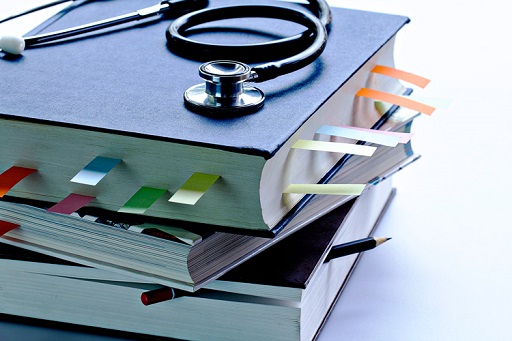TRANSPORT AND METABOLISM OF LIPOPROTEINS ::
Chylomicrons are produced in the intestine in response to dietary fat These are catabolized to form chylomicron remnants by lipoprotein lipase which is activated by apolipoprotein and hepatic lipase During this process triglyceride is removed by lipolysis to form free fatty acids Some chylomicron constituents are transferred to HDL (and some HDL constituents are transferred to chylomicron)
Chylomicron remnants are taken up by receptors in the liver These receptors appear to be regulated by changes in dietary cholesterol fat and apolipoproteins Some cholesterol is esterified by acyl-CoA (Cholesterol acyl transferase or ACAT )
VLDL synthesis occurs in liver and is increased in obese persons VLDL triglycerides and phospholipids are hydrolyzed by lipoprotein lipase and hepatic lipase in this process some VLDL constituents are transferred to HDL The end product of VLDL catabolism is LDL
LDL is the major cholesterol -carrying lipoprotein in human plasma Most LDL is derived from catabolism of VLDL This process occurs in the blood vessels LDL can be catabolized in various cells by receptor dependent and receptor independent mechanisms LDL is converted into cholesterol by the enzyme HMG CoA reductase in fact this is the rate limiting step in the formation of cholesterol
Direct production of HDL occurs in both liver and intestine HDL constituents are also derived from chylomicron and VLDL catabolism HDL serves as an acceptor of lipid especially free cholesterol from various tissues Concentration of HDL in plasma is usually higher in women that in men Hepatic lipase is involved in the metabolism of HDL Both liver and kidney are the major sites of HDL catabolism
When plasma lipoproteins are elevated or abnormal in composition they are taken up by scavenger cells in various tissues which lead to xanthoma formation lymphadenopathy or hepatosplenomegaly
TRANSLATE IN HINDI
लिपोप्रोटीन का परिवहन और चयापचय ::
आहार वसा के जवाब में आंत में काइलोमाइक्रोन का उत्पादन होता है। लिपोप्रोटीन लाइपेस द्वारा काइलोमाइक्रोन अवशेषों को बनाने के लिए इनका अपचयन किया जाता है, जिसे एपोलिपोप्रोटीन और हेपेटिक लाइपेस द्वारा सक्रिय किया जाता है। इस प्रक्रिया के दौरान ट्राइग्लिसराइड को लिपोलिसिस द्वारा मुक्त फैटी एसिड बनाने के लिए हटा दिया जाता है। कुछ काइलोमाइक्रोन घटक एचडीएल में स्थानांतरित हो जाते हैं (और कुछ एचडीएल घटक काइलोमाइक्रोन में स्थानांतरित हो जाते हैं)
काइलोमाइक्रोन अवशेष यकृत में रिसेप्टर्स द्वारा उठाए जाते हैं। ये रिसेप्टर्स आहार कोलेस्ट्रॉल वसा और एपोलिपोप्रोटीन में परिवर्तन द्वारा विनियमित होते हैं। कुछ कोलेस्ट्रॉल को एसाइल-सीओए (कोलेस्ट्रॉल एसाइल ट्रांसफ़ेरेज़ या एसीएटी) द्वारा एस्टरीकृत किया जाता है।
वीएलडीएल संश्लेषण यकृत में होता है और मोटे व्यक्तियों में बढ़ जाता है। इस प्रक्रिया में वीएलडीएल ट्राइग्लिसराइड्स और फॉस्फोलिपिड्स को लिपोप्रोटीन लाइपेस और हेपेटिक लाइपेस द्वारा हाइड्रोलाइज़ किया जाता है। कुछ वीएलडीएल घटक स्थानांतरित हो जाते हैं। एचडीएल में वीएलडीएल अपचय का अंतिम उत्पाद एलडीएल है एलडीएल मानव प्लाज्मा में कोलेस्ट्रॉल ले जाने वाला प्रमुख लिपोप्रोटीन है अधिकांश एलडीएल वीएलडीएल के अपचय से प्राप्त होता है यह प्रक्रिया रक्त वाहिकाओं में होती है एलडीएल को रिसेप्टर पर निर्भर और रिसेप्टर से स्वतंत्र तंत्र द्वारा विभिन्न कोशिकाओं में अपचयित किया जा सकता है एलडीएल को एंजाइम एचएमजी सीओए रिडक्टेस द्वारा कोलेस्ट्रॉल में परिवर्तित किया जाता है वास्तव में यह कोलेस्ट्रॉल के निर्माण में दर सीमित करने वाला कदम है एचडीएल का सीधा उत्पादन यकृत और आंत दोनों में होता है एचडीएल घटक भी काइलोमाइक्रोन और वीएलडीएल अपचय से प्राप्त होते हैं एचडीएल विभिन्न ऊतकों से लिपिड विशेष रूप से मुक्त कोलेस्ट्रॉल के स्वीकर्ता के रूप में कार्य करता है प्लाज्मा में एचडीएल की सांद्रता आमतौर पर महिलाओं में पुरुषों की तुलना में अधिक होती है हेपेटिक लाइपेस एचडीएल के चयापचय में शामिल होता है यकृत और गुर्दे दोनों एचडीएल अपचय के प्रमुख स्थल हैं जब प्लाज्मा लिपोप्रोटीन की संरचना में वृद्धि या असामान्यता होती है तो उन्हें विभिन्न ऊतकों में मेहतर कोशिकाओं द्वारा ले लिया जाता है जिससे जैंथोमा गठन लिम्फैडेनोपैथी या हेपेटोसप्लेनोमेगाली होता है


0 Comments